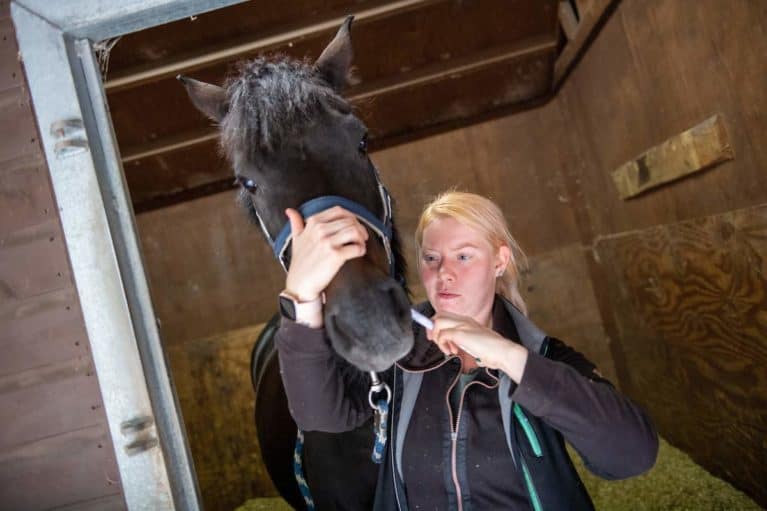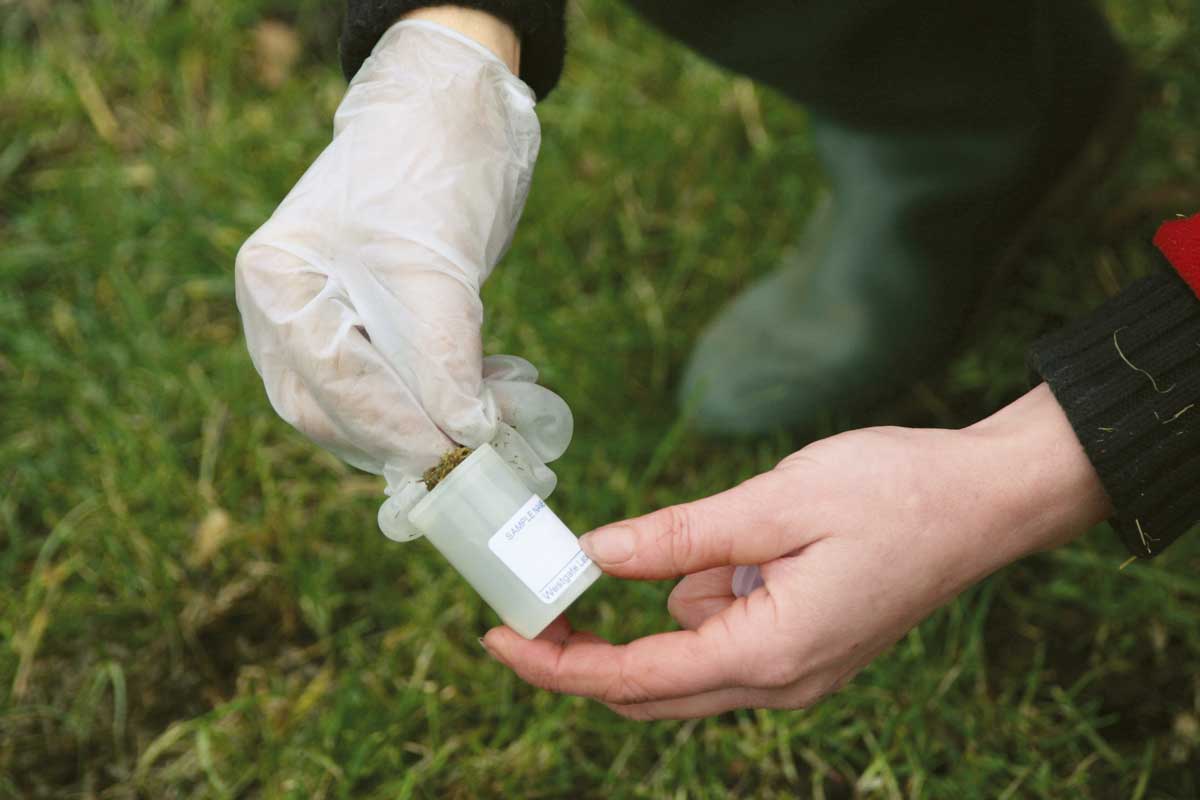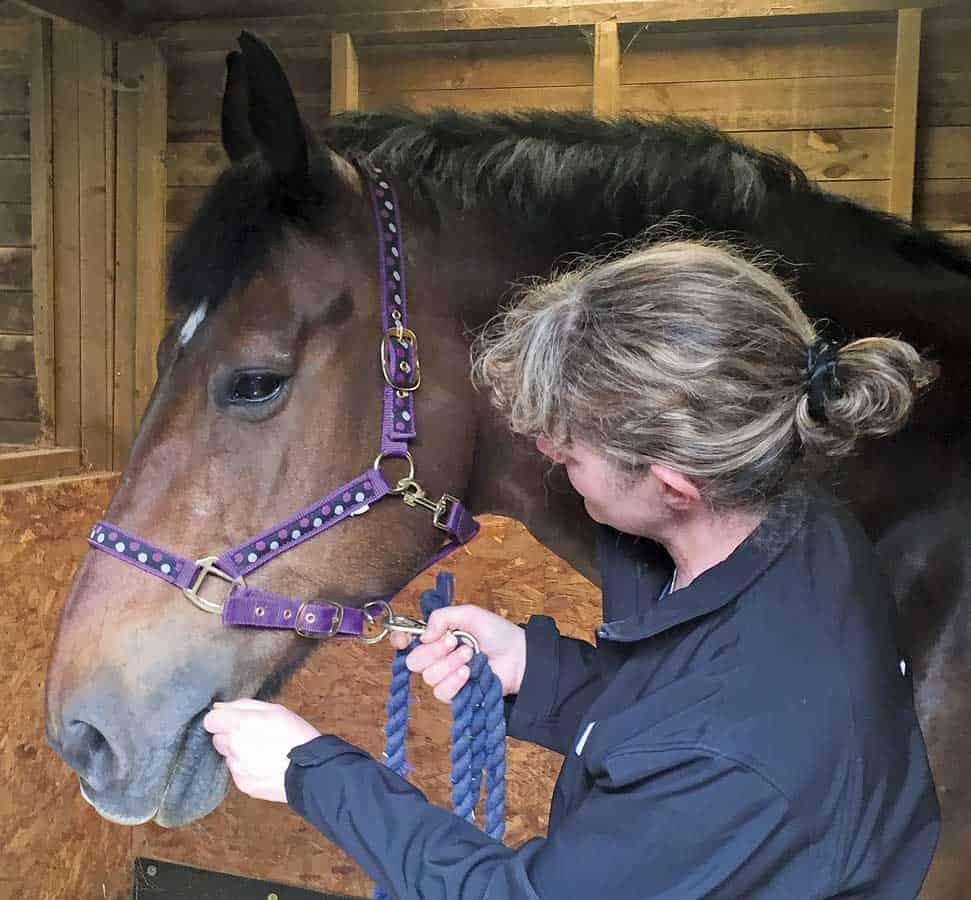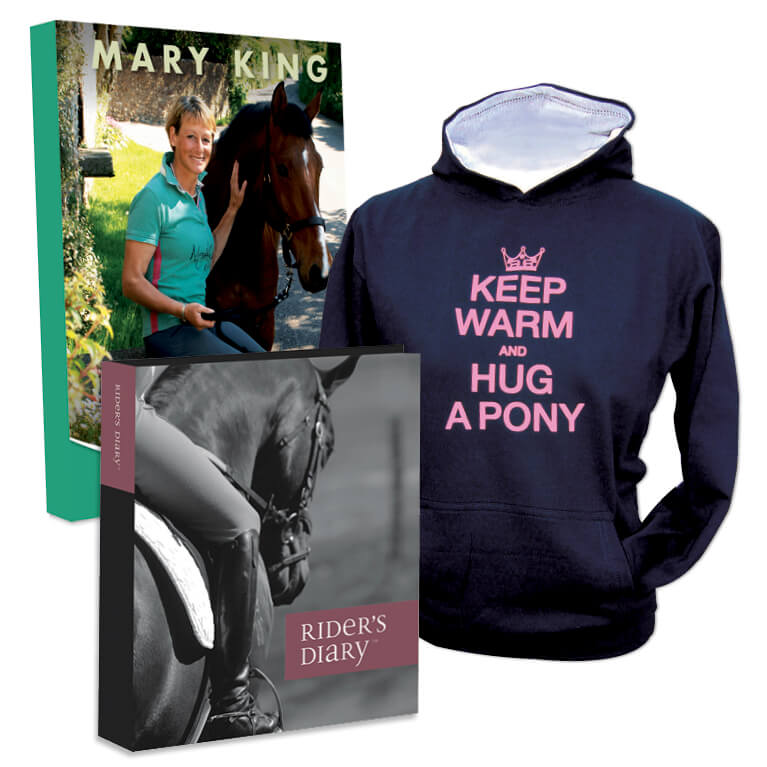An effective worming strategy is easy to put together, and will help keep your horse healthy and happy all-year-round

Having an effective worm control strategy for your horse is vital to protect him from health problems such as weight loss and colic, and to keep him performing at his best. The good news is it’s much easier than you think to compile a worming routine, and by taking a responsible approach you can help your horse stay healthy and help fight the worrying problem of wormer resistance.
Know your worms
- small redworm The most common parasite affecting horses, they can grow to 2.5cm long and reproduce in large numbers. Larvae bury into your horse’s gut wall, where they can lie dormant for months or even years – this is known as encysted small redworm
- large redworm Up to 5cm in length, they’re a darker red colour than small redworm and are found in your horse’s large intestine
- roundworm Able to grow to 40cm in length, they’re a creamy colour and mostly affect foals and young horses
- tapeworm They attach to the gut wall via suckers in the junction between the large and small intestine and, if present in large numbers, can cause colic
Top tip
You can seek advice about worming from your vet, or a suitably qualified person (SQP) at your local tack or feed shop, or online store. SQPs are trained to advise horse owners and prescribe some medicines, including wormers.
Targeted worming
How we approach worming has changed in recent years and the latest advice from vets is to only administer a worming product if your horse really needs one. This is known as targeted worming.
To find out whether your horse needs a wormer, there are tests available to identify the presence of intestinal worms. A faecal worm egg count (FWEC) involves having a sample of your horse’s dung tested to see if it contains any worm eggs. Your vet can do this, or you can buy a kit from a tack shop or online and send a sample to a specialist laboratory. FWECs identify egg-laying adult small redworm, roundworm and large redworm. If the test finds your horse’s dung sample contains more than 200 eggs per gramme (epg), you’ll need to worm him and the lab will tell you which product you should use. Below this number you shouldn’t need to worm.
A FWEC isn’t a reliable way to detect a tapeworm burden because its eggs are released in segments and they won’t be evenly distributed in a faecal sample. You can test for this parasite through a blood test (done by your vet) or a saliva sample (taken yourself using a home-testing kit). As part of a good worming programme, you should carry out a FWEC every 8–12 weeks during the grazing season and test for tapeworm twice a year, in autumn and spring.
Did you know?
Young horses are more prone to worm infestation as their immune system isn’t fully developed. Foals are born parasite-free, but are at risk of infection straightaway.
Encysted small redworm
One situation where it’s advised to use a chemical wormer routinely is to target encysted larvae of small redworm. The larvae bury into your horse’s gut wall, where some develop into egg-laying adults and others lie dormant (encysted), sometimes for months or even years. If a mass emergence is triggered, it can cause diarrhoea and colic and can be very serious. A FWEC won’t be able to identify encysted small redworm because the larvae don’t lay eggs, so it’s important to worm your horse in late autumn or early winter using an appropriate product. In the future, you may be able to test for encysted redworm, as scientists are working on a way to detect them.
Worming resistance
Worryingly, worms are developing the ability to survive the effects of worming products. This is called resistance and one of the biggest causes is overusing wormers. It’s thought that some worms have a genetic variation that enables them to survive treatment, so if you use wormers too often or give them when they’re not needed, you kill off susceptible parasites and leave the resistant ones to thrive, reproduce and become dominant. The other major cause is horses receiving too little product. The under-dosing causes a problem because it exposes worms to a product but isn’t enough to kill them, which can cause them to become resistant to its effects in the future. This is why it’s important to carry out FWECs to avoid overuse, and to dose accurately using a weighbridge or weightape in order to work out your horse’s weight.

Did you know?
It’s possible to test individual horses or groups of horses on a yard to find out if they’re carrying worms that are resistant to a type of wormer. It involves standard FWECs being done on all the horses. Each one who has an egg count higher than 200epg will need to be dosed with the appropriate wormer, then retested around two weeks later. If the worm burden is still high, the worms are resistant to the ingredients in that particular wormer.
Your worming plan
Spring – Carry out FWEC and test for tapeworm
Summer – Carry out FWEC
Autumn – Carry out FWEC and test for tapeworm
Winter – Dose for encysted small redworm
Top tip
Ask your vet practice if it has a worming programme you can sign up to, which will alert you when FWECs, tapeworm tests and worming for encysted small redworm are due.
The importance of pasture management
Keeping your horse’s grazing clean can go a long way to avoiding him ingesting worm eggs. To do this…
- poo-pick regularly
- avoid over-grazing paddocks
- ensure fields are rested
- consider cross-grazing with sheep or cattle, who will ingest the worm larvae but won’t be affected by them
Did you know?
Faecal worm egg counts should be carried out on any new horse before they’re allowed out to graze to prevent eggs being shed on the pasture if they have a high worm burden.
Other parasites that affect horses
- pinworm If your horse rubs his tail he could have pinworm, which are white and distinctive because they taper to a point. You can test for them by placing a strip of Sellotape over the skin surrounding his anus, which is where pinworm lay their eggs, and sending it to your vet or a lab for analysis
- bots Bot flies lay sticky, yellow-coloured eggs on your horse’s legs, neck and chest during late summer and early autumn. He can ingest the eggs if he licks or bites his skin, and the larvae will migrate to his stomach. In spring, bots pass out of the gut in droppings and hatch into flies. If you see bot eggs on your horse, remove them, and if you think your horse might be infected by bots, consult your vet who may suggest a worming product.
Top tip
Budget for worm control because even if you use fewer wormers through the targeted approach, you’ll still need to pay for FWECs and tapeworm testing kits, and strategic dosing for encysted small redworm.
How to do a tapeworm saliva test
1. Make sure your horse hasn’t eaten or had a drink in the half-hour prior to doing a saliva test
2. Write his name on the tube supplied and attach the barcode from the paperwork
3. Insert the swab in the gap between his front and back teeth, and let it sit on his tongue. He may move his tongue forward and back, so hold the swab tightly so he doesn’t swallow it and don’t let him bite it.
4. Hold the swab in place for 30 seconds, then check to see if the red indicator line has changed to pink, which means you’ve collected enough saliva. If it’s still red, hold the swab in his mouth for a bit longer.
5. Once the indicator is pink, put the swab in the plastic tube, being careful not to spill any of the preservative solution it contains. Screw the lid on.
6. Get the tube and paperwork in the post straightaway. If you’re testing more than one horse, check the barcode on each tube matches the paperwork so the samples don’t get mixed up.
7. The results take a few days and will indicate whether your horse has a tapeworm burden and, if necessary, what wormer you should purchase.

How to do a faecal worm egg count
1. A FWEC kit comprises a small plastic pot, a sticky label, a rubber glove and paperwork. Write your horse’s name on the label and stick it on the lid of the plastic pot.
2. Find a fresh dung pile that you know is from your horse and, wearing the glove, fill the pot. Take several pinches of poo from across a pile of droppings, rather than just using one lump.
3. Put the lid on the pot and add your name, address and your horse’s name to the paperwork.
4. Get the sample in the post or to your vet as soon as you can, then wait for the results. If your horse needs a wormer, you’ll be advised what product to use.













